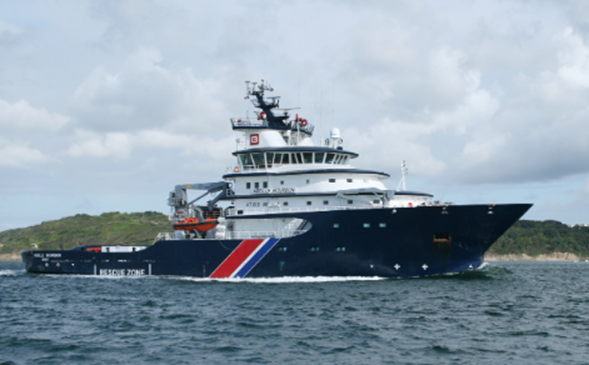2.2 Special Vessels - Salvage Tugs
Conditions d’achèvement
Salvage tugs are specialized vessels designed to assist ships in distress, aground, disabled, or in danger of sinking.
These powerful workhorses of the sea are equipped with advanced technology and a skilled crew to undertake challenging rescue and recovery operations including :
- Towage: Towing disabled vessels to safe harbors or repair facilities.
- Firefighting: Extinguishing fires on board ships.
- Refueling at Sea: Providing fuel to vessels in distress.
- De-watering: Pumping water out of flooded vessels.
- Wrecking: Salvaging sunken vessels or valuable cargo.
- Oil Spill Response: Containing and cleaning up oil spills.

Key Characteristics :
- Robust Hull Design:
- Ice Class Hulls: In regions with severe ice conditions, salvage tugs are built to withstand the immense pressures of ice, often requiring reinforced hull plating and special ice-breaking bows.
- Enhanced Structural Strength: The hull is designed to withstand heavy towing loads and potential impacts from other vessels or structures.
- Reduced Freeboard: A lower freeboard allows for greater stability and maneuverability, especially in rough seas.
- Powerful Propulsion Systems:
- High-Powered Engines: Salvage tugs are equipped with powerful diesel engines to generate significant bollard pull, enabling them to exert substantial force on a distressed vessel.
- Azimuth Thrusters: These versatile propulsion units provide 360-degree maneuverability, crucial for precise control in confined spaces or during complex salvage operations.
- Twin-Screw or Triple-Screw Configurations: Multiple propellers enhance maneuverability and towing capabilities.
- Advanced Towing Equipment:
- Heavy-Duty Towing Winches: These winches are capable of deploying and retrieving heavy-duty towing wires or chains, essential for pulling or pushing large vessels.
- Hydraulic Towing Pins: These pins allow for quick and secure attachment of towing gear to the tug and the distressed vessel.
- Warping Winches: Smaller winches used for maneuvering in close quarters or for deploying lines to assist in salvage operations.
- Specialized Salvage Equipment:
- Firefighting Systems: High-capacity pumps and water cannons to combat fires on board distressed vessels.
- Diving Systems: Equipped with diving chambers and support equipment for underwater inspections and repairs.
- Remotely Operated Vehicles (ROVs): ROVs can be deployed to assess damage, retrieve objects, or carry out underwater repairs.
- Pollution Control Equipment: Oil spill response equipment to mitigate environmental damage in case of accidents.
- Highly Skilled Crew:
- Experienced Masters and Officers: With extensive knowledge of maritime law, salvage procedures, and ship handling.
- Skilled Engineers: To maintain and operate the complex machinery on board.
- Trained Deck Crew: To handle towing operations, firefighting, and other salvage tasks.
- Certified Divers: To conduct underwater inspections and repairs.
Modifié le: lundi 4 novembre 2024, 12:31